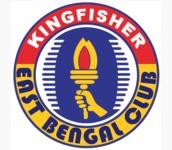Gaining International Recognition:
The success story for East Bengal club continued to run on smooth tarmac even after the independence. Following the recommendation of the then Indian President, Dr. Rajendra Prasad, as the best football club of India, East Bengal was invited by Romania Youth Festival Committee to participate in their football tournament at Bucharest in the year 1953.
Ever since East Bengal defeated the Chinese Olympic XI-2-0 in their first ever international club friendly in the year 1948, the club inherited an affluent distinction of showing winning performances against the foreign club sides. In 1951, the Red & Gold Brigade defeated Swedish Champions F.C. Gotheburg by a 1-0 margin, and in 1956 the Club triumphed over Chinese Olympic XI 3-1.
The glorious trend against foreign clubs continued, as East Bengal defeated Pas Club of Iran in the 1970 IFA Shield Final, Korean club Piyong Young in the 1973 IFA Shield Final, Dok-Ro-Gang Club of South Korea in the Final of DCM football tournament in 1973, and Port Authority Club of Thailand in the Final of Bordoloi Trophy in the year 1978. Notable players from that period included former Olympians Mohammed Habib, Arun Ghosh, Subhas Bhowmick, Sudhir Karmakar, Syed Nayeemuddin et al.
The Golden Decade of 1970s:
East Bengal club dominated the domestic club football arena in the 1970s. The country’s most successful coach, P.K. Banerjee, was managing the club then. With the likes of Shyam Thapa, Akbar, Manoranjan Bhattacharya and Surajit Sengupta, coupled with PK’s famous Vocal Tonic, East Bengal became the indomitable force in the country, winning the Calcutta League on six consecutive occasions from 1970-’75 and the IFA Shield five continuous times from 1972-‘76.
The pillar of success, which garnered the belief in the players during that period, was laid in the memorable win against Pas Club of Iran in the 1970 IFA Shield final. Iran were a force to reckon with in world football at that time, and the Pas Club squad had seven World Cup campaigners in their ranks. East Bengal fought hard to match their more illustrious rivals and snatched a narrow 1-0 win, to write a new chapter in the history of the club in particular, and Indian football in general.
29th September, 1975 – A Day To Remember:
Then came the magical moment of splendor that every Red & Gold supporter loves to cherish even today. The stage was the 1975 IFA Shield Final against Mohun Bagan. In a performance that made its way into East Bengal folklore, the Red & Gold brigade steamrolled their way to a thumping 5-0 victory over their bitter city rivals, which still remains the biggest ever margin in the history of Kolkata derby.
Surajit Sengupta, an ex-Mohun Bagan striker, drew the first blood for the Red & Gold brigade in the 5th minute of the match. East Bengal could have doubled their lead in the 11th minute, but the ever reliable penalty shooter Shyam Thapa missed the target from the spot. Thapa made amends in the 24th minute with a neat finish off a Subhash Bhowmick cross to make it 2-0.
Then came the magical moment of brilliance, and Ranjit Mukherjee scored the goal of the match with just about seven minutes to go before the half time whistle. Surajit Sengupta and Shyam Thapa played a nice sequence of passes between them, and the former slotted the ball to Ranjit, who dribbled past two defenders before rounding off Mohun Bagan goalkeeper Bhaskar Ganguly, to make it 3-0 for East Bengal.
Shyam Thapa completed his brace in the 52nd minute, when Surajit Sengupta’s screamer rebounded off Bhaskar‘s hands, and an opportunistic Shyam did not fail to capitalize. Substitute Subhankar Sanyal completed the misery for Mohun Bagan, putting the fifth nail in their coffin with six minutes to go before the final whistle. That was the pinnacle of glory for the club, and this spell of incredible football is etched into the memory of every East Bengal follower as the Golden Decade.
The Immortal Squad:
Tarun Basu, – Sudhir Karmakar, Ashokelal Banarjee, Shyamal Ghosh, Kajal Dhali (Mridul Mudsuddi), – Samaresh Chaudhury, Gautam Sarakar, Subhas Bhowmik, – Ranjit Mukherjee, Shyam Thapa (Subhankar Sanyal), Surojit Sengupta.
Photo Courtesy: Dr. Debaprasad Deb [Paper cutting, Anandabazar newspaper: 30th Sep, 1975]
The Stumble and Convalescence:
As they say, the only way from the pinnacle is the way down; East Bengal failed to replicate its magic in the next decade. A contradiction of opinions between club secretary Dr. Nripen Das and coach P.K. Banerjee prompted the latter to part ways with East Bengal, and the club faced a difficult period to recuperate.
To make the matters worse, there came the black day of 16th October 1980, the darkest day in the history of Indian football. In a crucial face-off between the two arch-rivals, East Bengal encountered Mohun Bagan in an ill-tampered battle at the Eden Gardens. The high flying tempers on the field got cascaded into a riot like situation in the galleries. The clash between two sets of supporters resulted in few fatal casualties, and many were left seriously injured. This unfortunate incident proved to be a permanent blot in the passionate rivalry between the two clubs.
After a brief period of slump, the mid 1980s saw East Bengal rise to domestic prominence yet again under the able leadership of the newly elected club secretary, Mr. Deepak (Paltu) Das. Young players like Bhaskar Ganguly, Aloke Mukherjee, Krishanu Dey and Bikash Panji came into the senior ranks, and the Red & Gold flag soared high once again.
East Bengal achieved the glory of becoming the first Indian club to represent the country in the finals of Asian Club Cup Championship in Jeddah (Saudi Arabia) in 1985-86. Overall, the club has represented our country in Asian Club tournaments a record nine times – a distinction which the other Indian football clubs remain envious of.
(To be continued…)
